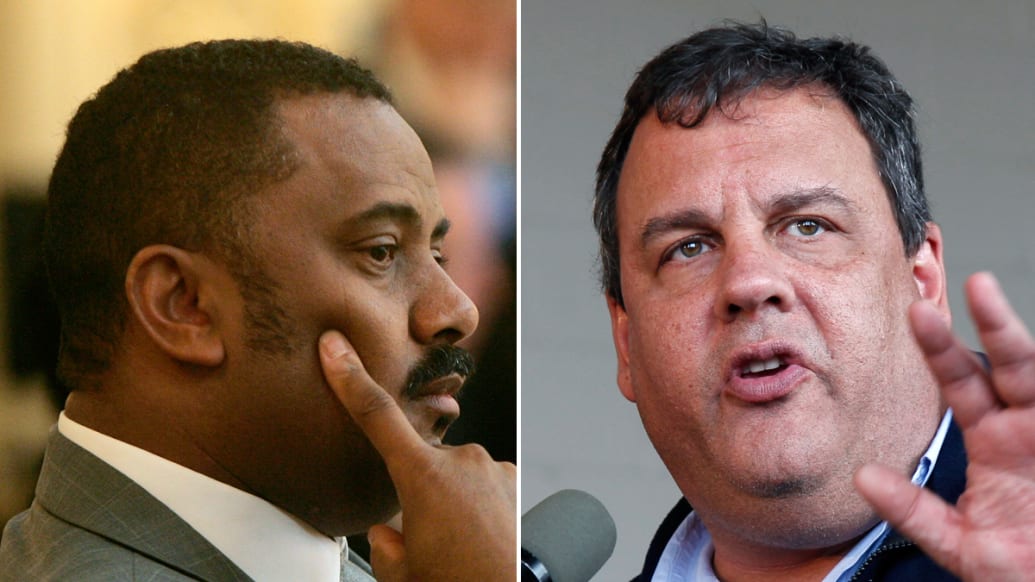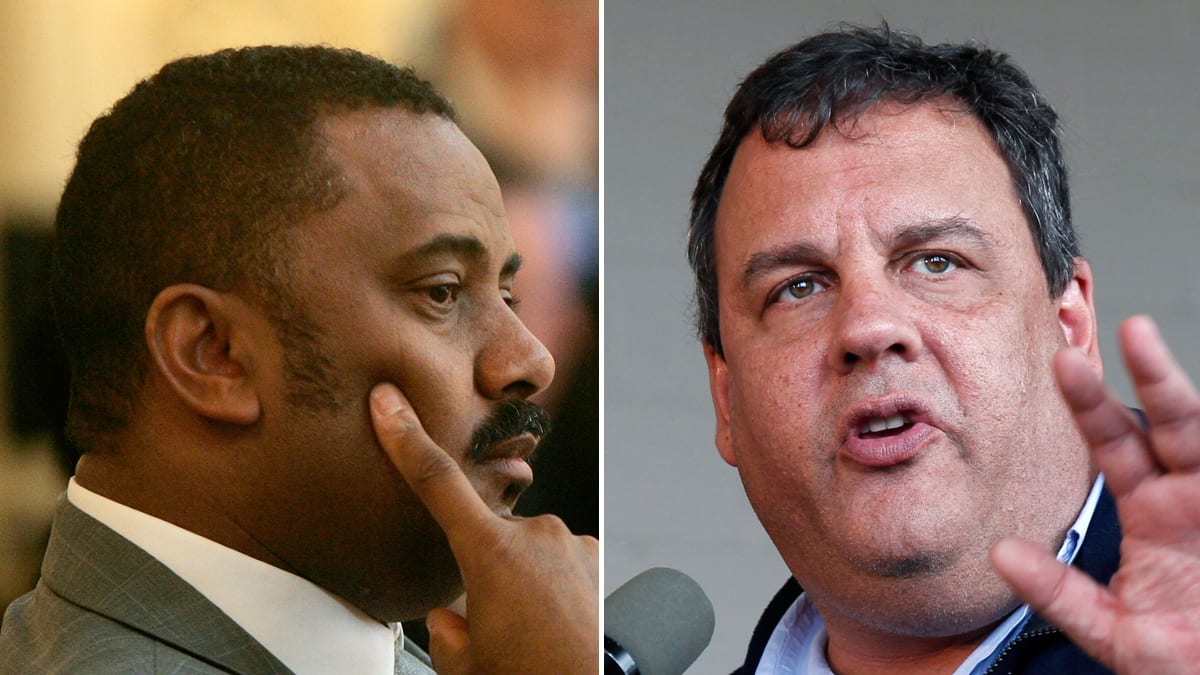At pretty much every rung of the political ladder, elected officials staring down the barrel of a natural disaster like Sandy understand there are basic rules to projecting an image of reassuring leadership: look calm but not cavalier; concerned but not fearful; serious but not grim; in control but not dictatorial. To the greatest degree possible (and especially at press conferences) surround yourself with confidence-inspiring first responders (preferably in uniform) and focus anywhere from 20 to 35 percent of every statement on their awe-inspiring heroism. Grandstanding is best postponed until several days after the danger has passed. And when the temptation to politicize or otherwise exploit the situation becomes irresistible, at least try to be subtle.

Within this framework, pols are free—expected even—to put their own spin on a performance, based both on the particulars of their region and on their own political personas.
Unsurprisingly, the most colorful display this week came from New Jersey Gov. Chris Christie, who, in the run-up to Sandy, repeatedly declared that anyone refusing to evacuate the state’s barrier islands was being both “stupid” and “selfish.” As for those inclined to dismiss such warnings because Christie had been wrong about past storms, the governor challenged: “I turn out to be right, you turn out to be dead—that’s not a great equation.”
Nor did Christie soften as Sandy came ashore. At a Monday evening press conference announcing that rescue missions were being suspended until morning, Christie accused Atlantic City Mayor Lorenzo Langford, a Democrat with whom he shared a preexisting political feud, of encouraging residents not to evacuate. Not to be outdone, Langford fired back, slamming Christie for dishonesty and for playing politics. But the governor held the larger megaphone and thus the upper hand. As for the residents themselves who’d stayed behind: “This is now your responsibility,” the governor barked. Nothing left to do but “hunker down.”
“Hunker down” was also the advice given—though much more avuncularly—by New York City Mayor Michael Bloomberg. Vastly lower-key than Christie, Bloomberg urged New Yorkers to “hunker down, take a sandwich out of the fridge, and watch some TV”—as though they were waiting out a rain delay of game 7 rather than bracing for a meteorological calamity. Then again, such keep-calm-and-carry-on nonchalance is vintage Bloomberg. (The New York Times was quick to recall how, as last winter’s blizzard loomed, the mayor advised his citizenry to relax and take in a show.) At this point, if the mayor showed genuine passion over a brewing storm, he’d throw 8 million people into paranoid hysteria.
Down the coast, as the Washington, D.C., area hunkered down (and sandwiched up, if the rush on grocery stores was any indication), Maryland Gov. Martin O’Malley knew exactly what loomed in the minds of his people: how much they loathe the local power company, PEPCO. Well aware of the utility’s most-hated status among constituents, the mayor informed The Daily Beast on Monday that he had a “boot up the backside” of PEPCO. Message to voters: hundreds of thousands of you will no doubt wind up in darkness, but rest assured I will make someone pay.
When the region escaped the worst of the storm, a visibly relieved O’Malley reappeared (first responders in tow, of course) Tuesday morning to give a report on the state of the state—and assure residents that utility crews had been on the job since daybreak.
Above it all, of course, hovered President Obama. Long before landfall, the Obama campaign began canceling campaign events, stressing the president’s close monitoring of the Sandy situation. Obama himself began burning up the phone lines, consulting with FEMA, the Red Cross, and, of course, local officials. Before the storm, conference calls were arranged with mayors and governors. During and after, Obama placed all-hours calls to individual leaders, soliciting concerns, receiving progress reports, and offering aid. In turn, everyone from Philly Mayor Michael Nutter to Governor Christie wound up publicly praising Obama’s leadership—which is really the best a president can hope for in such circumstances.
And then, there was New York’s own Andrew Cuomo. Among the shrewdest of political operators, the governor’s morning-after press briefing was a case study in how to slip a bit o’ politics into an ostensibly nonpolitical moment. As part of his ode to the city’s courageous first responders, Cuomo reminded everyone (not for the first time this week) of his vast experience dealing with “disaster mitigation” as a Clinton administration official, coping with fires, floods, and all manner of horrors across this great nation. Marveling at the unprecedented fierceness of Sandy, he made a pitch about the need to address the new weather reality in this age of global warming. In one particularly impressive maneuver, he recounted, “As I kiddingly told the president the other day, ‘We have a 100-year flood every two years now.’” With that mini-anecdote, the governor managed an impressive political twofer: combining an ideological message with a self-aggrandizing one. After about 10 minutes, Cuomo turned proceedings over to other officials, then, a few moments later, excused himself altogether by explaining that he had to go call the president—such calls, he noted, being the way you go about getting disaster relief for your state. Top that, Governor Christie.
The real test for all these leaders is yet to come, of course, as the extent of the damage becomes clear and cleanup efforts drag on (and on). But for now at least, most seem to have weathered the initial tempest without incurring too much damage.
Except maybe for poor Mayor Langford. Whatever the forecast, it doesn’t pay to be on Governor Christie’s bad side.

